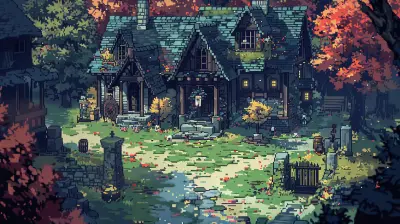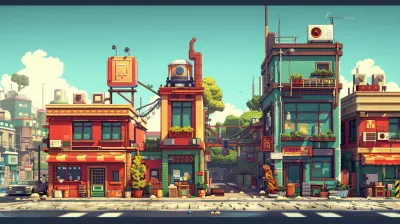Designing Ruins and Abandoned Spaces to Tell Stories in Your Game
21 April 2025
When was the last time you wandered through a crumbling ruin in a video game and felt it whisper its secrets to you? Ruins and abandoned spaces aren’t just backdrops for epic battles or hidden treasures. They’re treasure troves of untold stories, dripping with history, mystery, and emotion. Whether it’s a decrepit castle perched on a cliffside or a forgotten factory overtaken by nature, these spaces beg to be explored—and for good reason. They hold the keys to immersive storytelling in games.
But how do you nail the perfect design for these haunted, forsaken locales? Let’s dive into the art of designing ruins and abandoned spaces that captivate players and weave engaging narratives.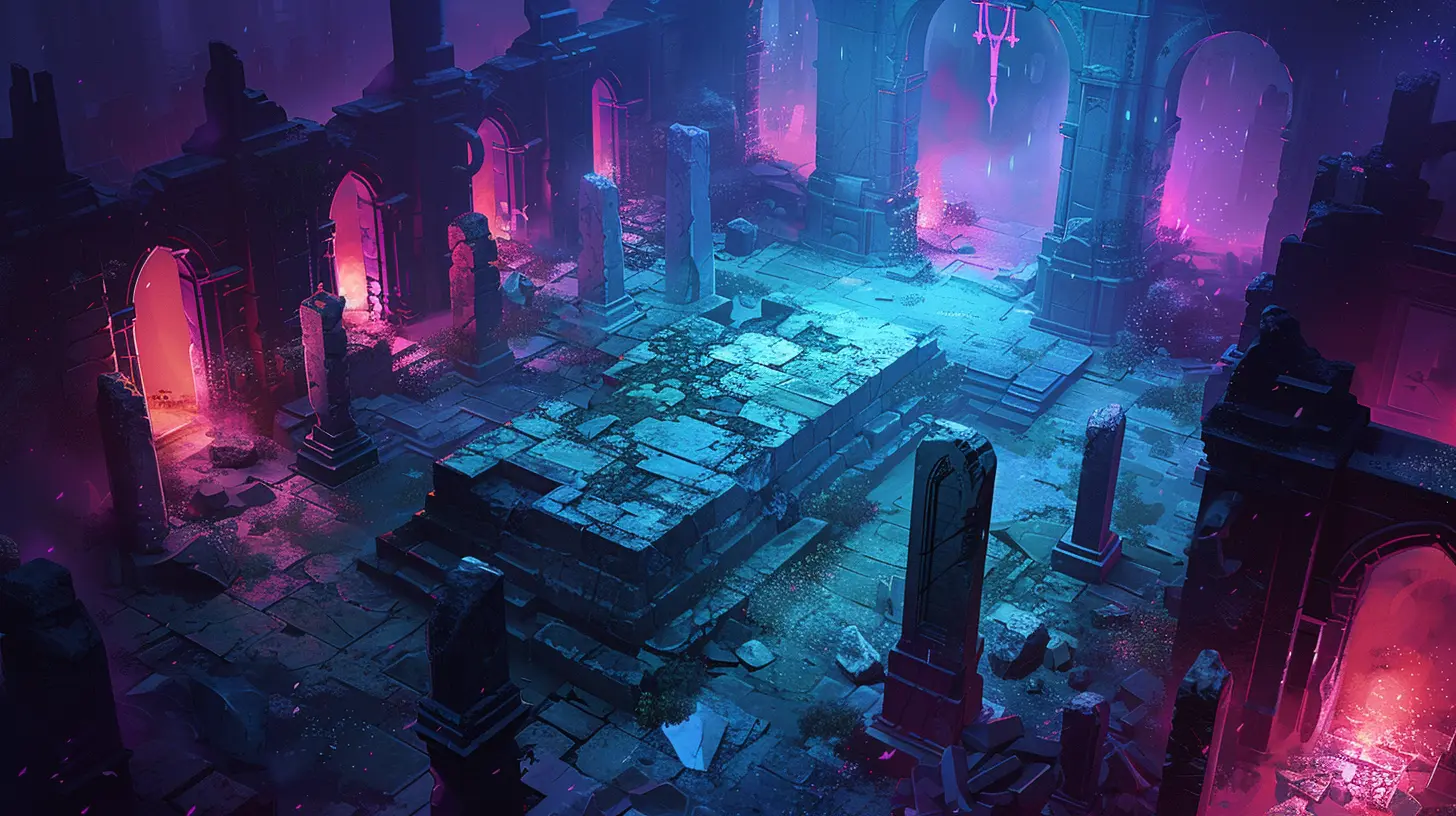
Why Ruins and Abandoned Spaces Matter
Think about it: as gamers, we naturally crave exploration. A ruined space or an abandoned building immediately triggers curiosity. Who lived here? What happened to them? Why was this place forsaken? These questions pull players deeper into the world you’ve created without you saying a word.Unlike bustling cities or vibrant forests, ruins evoke a sense of isolation and lost time. They’re like ghostly time capsules, frozen in a moment of history, waiting for someone to unearth their stories. Whether you're working on an open-world RPG, a platformer, or a survival-horror game, integrating these spaces can enhance your game’s narrative tenfold.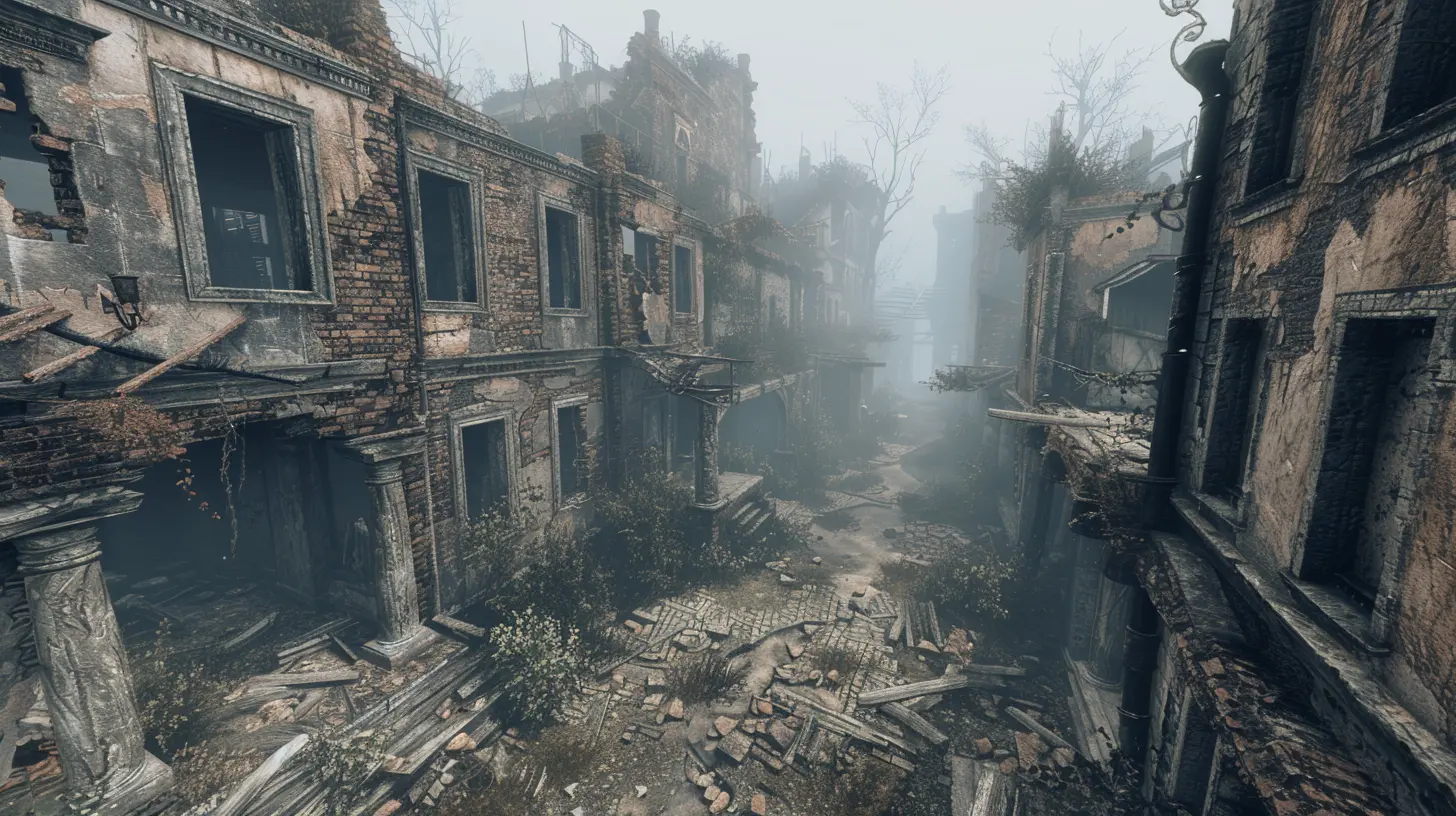
Start With a Backstory
Before you even break out your level-design tools, ask yourself this: What happened here? The magic of a good ruin starts with a solid backstory. Was it a thriving town destroyed by war? A fortress abandoned after a siege? An industrial site shut down after a tragic accident? Knowing the events that led to the ruin’s demise will help you shape everything else.Think of the backstory as the skeleton of the space—it should inform every little detail, from the architecture to the debris scattered on the ground. For example:
- A castle overtaken by an earthquake might have jagged cracks through walls and towers toppled into a chasm.
- A laboratory destroyed by an experiment gone wrong might have scorched walls and strange green ooze staining the floors.
Get specific. The more detailed your backstory is, the more vivid and believable the ruin will feel to players.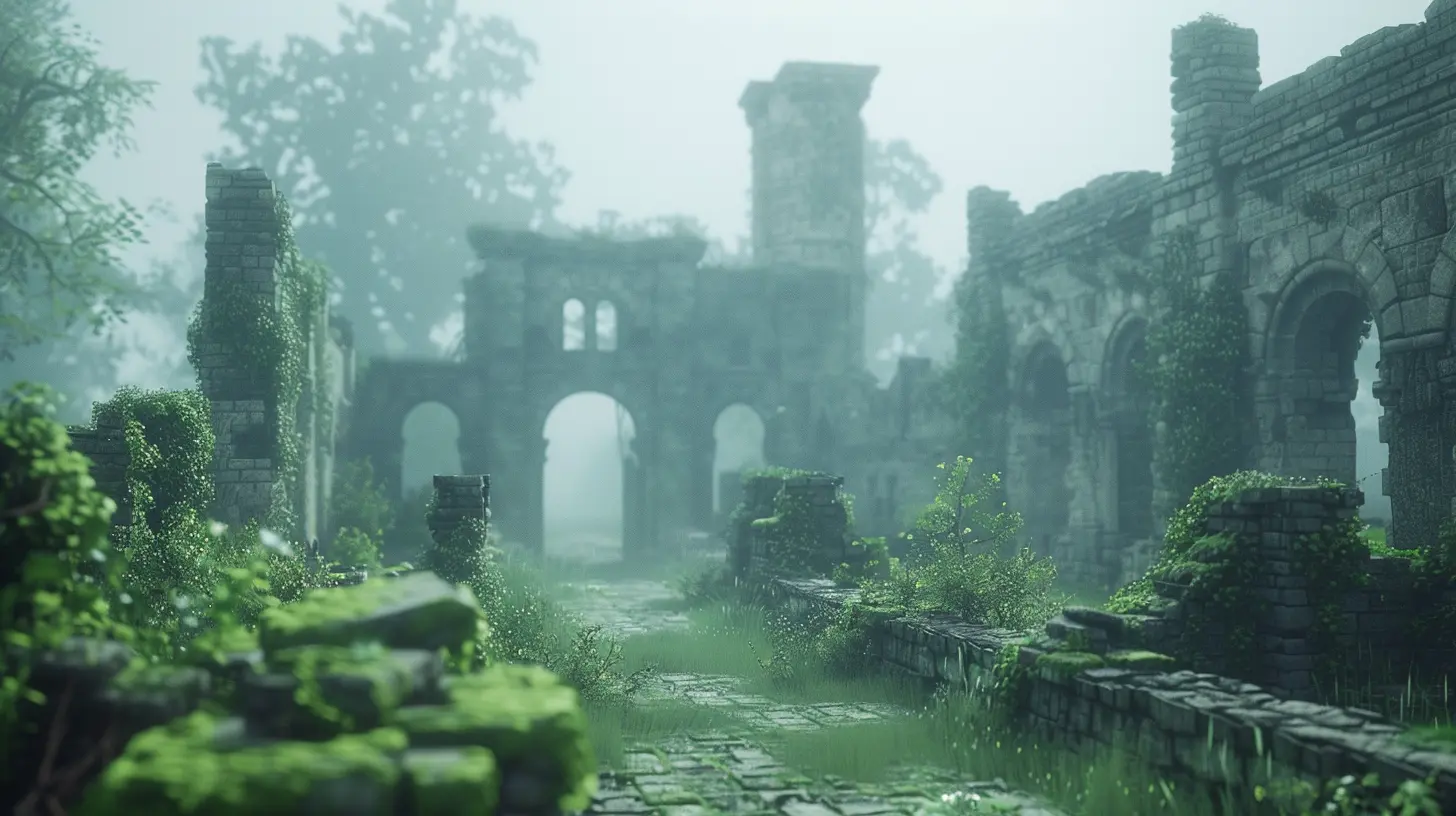
Use Environmental Storytelling
Alright, let’s talk about one of the coolest tricks in the game-design bag: environmental storytelling.Ruins and abandoned places shine when you let the environment tell the story. Instead of spelling everything out with dialogue or text, let players piece it together themselves. It’s like giving them detective hats and saying, “Figure this out.”
How do you do this?
- Scattered Items: Place objects that hint at the past. A child’s toy on a dusty bed. Faded photographs pinned to a wall. A broken sword abandoned in a pile of rubble.- Graffiti and Markings: Have messages carved into walls, whether graffiti warning others to “STAY AWAY!” or desperate notes left behind by survivors.
- Decay and Damage: Let the state of the ruin reflect its story. Crumbling walls indicate age, while burned floors suggest fire. A sudden pile of rubble may hint at an explosion.
- Nature’s Reclamation: Show how nature has taken over. Roots breaking through a factory floor. Moss crawling over ancient statues. Birds nesting in forgotten corners. These details can tell players how long the place has been abandoned.
Environmental storytelling is all about subtlety—trust your players to connect the dots.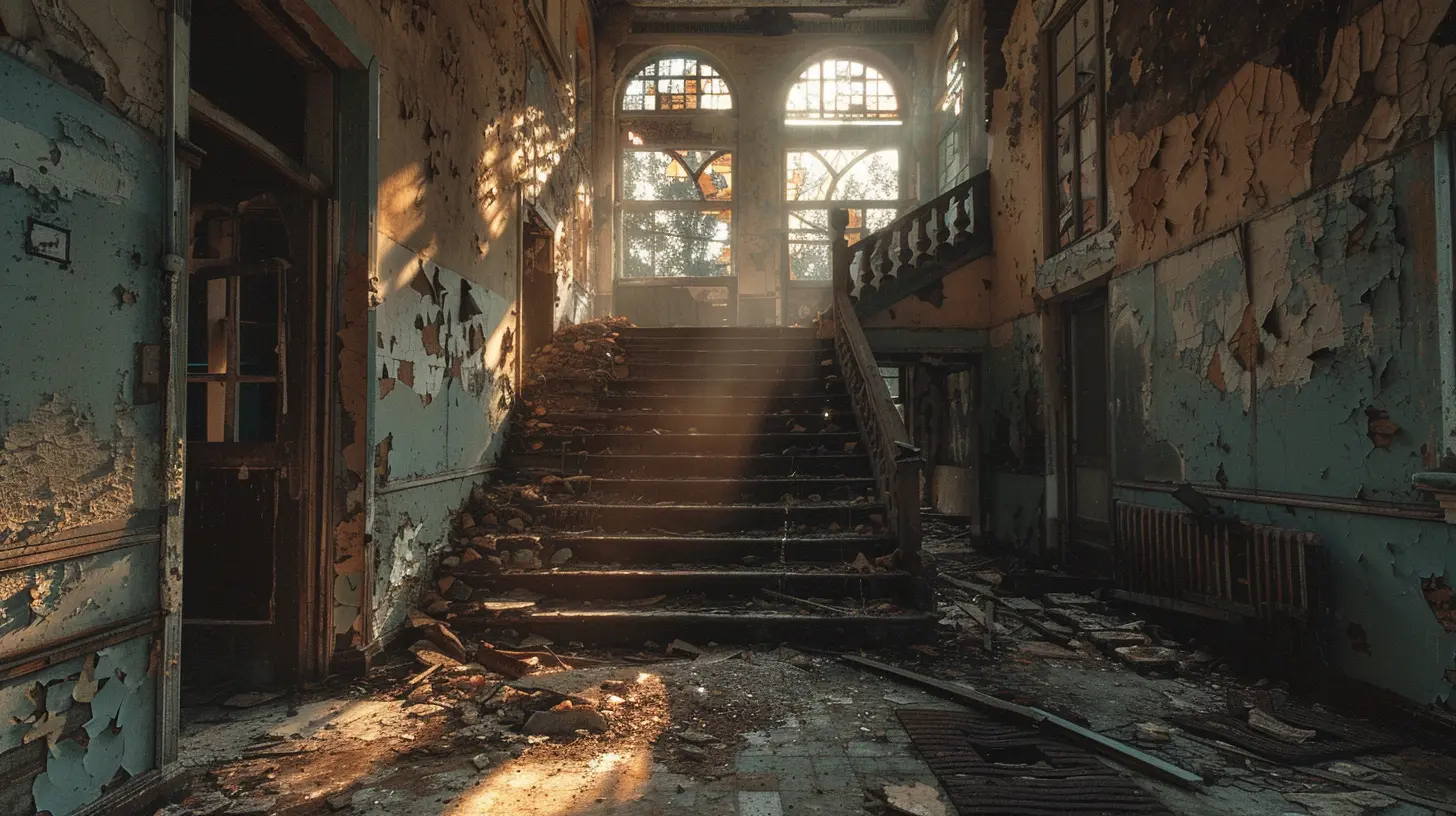
Immerse Players With Atmosphere
If ruins are where stories are told, atmosphere is how those stories are felt. You want players to feel the weight of time and the eerie silence of abandonment. Achieving atmosphere is all about the senses.Lighting
Dim, uneven lighting is your best friend. Think flickering lanterns, shafts of sunlight filtering through broken roofs, or pale moonlight hitting cracked stone. Shadows should be everywhere, making players second-guess what they’re seeing.Sounds
A good ruin doesn’t just look abandoned—it sounds abandoned. The drip of water echoing in a cavern. Rustling leaves outside a shattered window. The faint creak of wooden beams under pressure. Sound design is often overlooked, but it’s one of the most potent tools for building atmosphere.Textures
The visuals can make or break your ruin. Cracked walls, peeling paint, rusted machinery, weathered carvings—these textures tell players, “Hey, this place has seen things.” Mix it up to create layers of decay.Space
Ruins thrive on emptiness. Resist the urge to clutter every corner with objects. Open, barren spaces can evoke a sense of loneliness and desolation, which fits perfectly with the theme of abandonment.Add Layers of Mystery
Want to keep players hooked? Add just enough mystery to entice them. Don’t hand them all the answers on a silver platter. Let them question and theorize.For instance, leave behind cryptic clues that hint at what happened. A journal with torn-out pages. An NPC muttering about a shadowy figure known only as “The Warden.” The locked door with scratches on it, begging the question: what’s behind it?
Mystery keeps players engaged, and that lingering unease makes exploring ruins even more rewarding.
Functional Gameplay in Ruins
Ruins should be more than eye candy. They should also serve a purpose in gameplay. Here are some ways to integrate them into different mechanics:- Exploration and Discovery: Stash collectibles, lore documents, or secrets in hard-to-reach corners.
- Puzzles: Use the decay to your advantage. A collapsed staircase could require players to find a ladder or manipulate debris to progress.
- Combat: Tight corridors, broken floors, and scattered cover can create dynamic combat zones, forcing players to strategize.
- Survival Elements: For horror or survival games, abandoned spaces are excellent places to hide resources—or traps.
The key is striking a balance between function and immersion. Everything should feel like it belongs.
A Touch of Emotion
Ruins aren’t only about history—they’re about emotion. Don’t be afraid to tug at the heartstrings. Maybe players stumble upon a diary written by someone who refused to leave the town as it crumbled. Or a makeshift shrine to someone’s lost loved one. These little glimpses into the lives of the past inhabitants create an emotional connection.The best ruins aren’t just places—they’re characters in their own right, filled with sorrow, anger, or even hope.
Don’t Forget the Big Payoff
Here’s the thing: players are going to invest time and effort exploring your ruined spaces. Reward them for it. This doesn’t always mean loot (though, let’s be real, loot is nice). The payoff could be an epic cutscene, a piece of lore that ties into the main story, or even a shocking twist. Give the players something that makes them think, “That was so worth it.”Examples of Iconic Gaming Ruins
Need some inspiration? Let’s shine a spotlight on a few games that absolutely nailed their ruin designs:- The Last of Us Series: From nature-infested cities to abandoned hospitals, every ruin tells a heartbreaking story of a world gone wrong.
- Shadow of the Colossus: Ancient, haunting ruins fill this game. They’re as much a part of the world’s lore as the Colossi themselves.
- Dark Souls Series: The ruins in these games are cryptic, eerie, and full of mystery. You can’t walk five feet without stumbling over some epic environmental storytelling.
These games show us that the best ruins aren’t just places to visit—they’re integral parts of the narrative.
Wrapping It Up
Designing ruins and abandoned spaces for your game isn’t just about making things look old and broken. It’s about creating stories that players can uncover for themselves, crafting atmospheres that evoke emotion, and putting a little bit of you into every crumbled pillar and shattered window.So, when you're designing your next game, remember to take a step back and ask yourself: What stories does this space have to tell? If you’ve got that figured out, you’re already on the path to creating something unforgettable.
all images in this post were generated using AI tools
Category:
World BuildingAuthor:

Emery Larsen
Discussion
rate this article
5 comments
Isolde Simon
Great tips! Designing ruins can add depth to your game world, engaging players through exploration and uncovering rich, hidden narratives.
May 11, 2025 at 4:30 AM

Emery Larsen
Thank you! I’m glad you found the tips useful. Exploring ruins can indeed create immersive experiences and deepen storytelling in games!
Zachary Scott
What a fascinating read! Designing ruins and abandoned spaces can truly elevate storytelling in games. I can’t wait to see how developers bring these elements to life!
April 24, 2025 at 3:50 PM

Emery Larsen
Thank you! I’m thrilled you enjoyed it. It’s exciting to see how these spaces can deepen player immersion and storytelling!
Elowyn McEvoy
This article offers insightful perspectives on integrating storytelling through ruins and abandoned spaces in games. Emphasizing atmospheric design enriches player experience, making exploration feel meaningful and immersive. Well done!
April 23, 2025 at 3:09 AM

Emery Larsen
Thank you for your thoughtful feedback! I'm glad you found the perspectives on storytelling and atmospheric design valuable for enhancing player experience.
Colton Peterson
“Nothing says ‘epic backstory’ like a crumbling wall with a mysterious stain. Just make sure it doesn’t look like my old college dorm!”
April 22, 2025 at 3:41 PM

Emery Larsen
Absolutely! A well-designed ruin should evoke curiosity and history, not nostalgia for messy dorms. Let's create spaces that inspire adventure!
Georgia Pacheco
Great insights! Ruins can evoke deep emotions and enhance storytelling by immersing players in forgotten histories.
April 22, 2025 at 4:42 AM

Emery Larsen
Thank you! I'm glad you found the insights valuable. Ruins truly add depth and emotion to storytelling in games.
